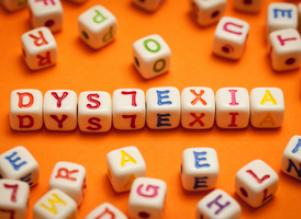8/4/2019
English Learners and Dyslexia: A Guide
There are students who are English Learners (ELs), there are students who have dyslexia... and there are also ELs who have dyslexia. In
a video presentation on the subject of EL students who may also have dyslexia, Dr. Fumiko Hoeft of the University of California, San Francisco discussed the difficulty of properly assessing the needs of such students. According to Dr. Hoeft, while ELs are rapidly growing in number across the United States, there is “very little research” available when it comes to figuring out if a bilingual student also has dyslexia.
Dr. Hoeft went on to point out that some risk factors associated with dyslexia—such as issues related to phonemic awareness and rapid automatized naming—are often present in ELs as well, which can make it hard to pick up on dyslexia within this student population. In an ideal situation, students at risk for dyslexia would be assessed in English and their native language to see whether these risk factors can be seen in both situations; any family history of dyslexia should also be taken into account, as
the presence of a parent or sibling with dyslexia significantly increases a student’s chance of also having the condition.
Important note: This aforementioned situation can be quite difficult because not all teachers and reading specialists are able to completely discern the difference between the natural process of language learning and reading difficulties. As mentioned, they can sometimes look the same so it is crucial to avoid creating equity and social justice issues by erroneously placing English Learners in Special Education classes if they are not learning disabled.
That said, English can simply be a difficult language for students to learn. As
Montreal-based teacher Frank Bonkowski noted in a 2017 blog post on how to create a “dyslexia-friendly ESL classroom,” English and other “opaque” languages can be quite confusing for non-native speakers because “transparent” languages such as Spanish have a “much closer relationship between spelling and sounds.”
Confusing, indeed! And therein lies the problem: Diagnosing EL students with dyslexia can be especially tricky because the toughness of learning English can mask dyslexia risk factors.
Avoid jumping to conclusions
Bonkowski's assertion is echoed in
a Language magazine article by Dr. Kelli Sandman-Hurley, who co-founded the Dyslexia Training Institute in San Diego. In her piece, “Dyslexia and the English Learner Dilemma,” Dr. Sandman-Hurley emphasized that dyslexia “affects humans, not English readers, which means that students in classrooms who are struggling to learn English may be at risk for dyslexia.” However, these students may be overlooked for the reasons outlined above, including the assumption that “because the English language is complicated and opaque, the student is having difficulty learning it but will eventually get it.”
While this may be true for some students, Dr. Sandman-Hurley urged against subscribing to the automatic belief that it is the language itself causing problems for an EL student. Instead, she recommended digging deeper to identify whether dyslexia is the root issue.
Diagnosing and managing dyslexia in ELs
Strategies for diagnosing dyslexia in the EL classroom and helping students who have been identified as having the disorder include the following:
- Assess students in their native language. As a starting point, Drs. Hoeft and Sandman-Hurley recommended that students suspected of having dyslexia should be checked for phonemic awareness problems in their first language. This approach may even be helpful for students who cannot read in their native language, as these individuals can still be tested on phonemic awareness.
- Look for problems with fluency and spelling. Beyond phonemic awareness, students’ ability to spell and read with fluency in their native language can be an important dyslexia signifier—especially if their mother tongue is a “transparent” language in which sounds and letters are more directly related. As Dr. Sandman-Hurley phrased it, “Fluency and orthography issues are red flags for dyslexia,” while the inability to decode words is a more prominent risk factor for native English speakers. Again, it is important to remember that not all ELs are literate in their native language, so we must ensure accurate assessments to avoid equity inequalities.
- Understand the challenges. As previously stated, detecting dyslexia in a non-native English speaker can be tricky for many reasons. Beside the difficulty associated with determining whether a student is merely struggling to learn English (an opaque language) or actually has a learning disability, cultural factors may play a part as well. Both Dr. Hoeft and Dr. Sandman-Hurley touched on the idea that students new to the U.S. may not previously have had access to formal instruction or may be dealing with trauma or other intervening conditions that make learning more challenging.
- Utilize instructional practices that can benefit ELs with or without dyslexia. According to Dr. Sandman-Hurley, EL students with dyslexia tend to be identified far later than their native English-speaking peers, which puts them at a distinct disadvantage. While she acknowledged that it is best to start helping students by working on literacy in their native language first, this is not always feasible. Thus, Dr. Sandman-Hurley and many of her cohorts advocate for a dyslexia-friendly approach centered on “direct instruction that includes speech perception, phoneme awareness, and sound-symbol connections.”
A presentation by Yale professor Dr. Laura Raynolds echoed this advice by advocating for the development of a clear understanding of individual students—including cultural practices, past educational experiences, and personal characteristics—as part of the evaluation process for EL students who may have dyslexia. The presentation went on to offer a thorough look at the typical language acquisition process for ELs, with Dr. Raynolds noting the importance of conducting a comprehensive audit to clearly understand the source of a student’s issues with reading.
Whether students are working to master the nuances of the English language, overcome the challenges associated with dyslexia, or both, it is important for educators to set them up for success.

